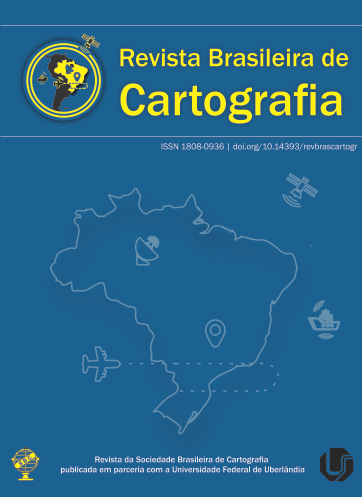Evaluation of “See Color” Color Code System on Tactile Map
Main Article Content
Abstract
Tactile maps are cartographic products that communicate geographic information to visually handicapped, so the most of the visual graphic variables used on maps can be represented in high relief, except the color variable. Although, an alternative to inclusion of the ability of blind people about color on tactile map is the use of color codes. Thus, this paper evaluated the effectiveness and efficiency of color code system denominated “See Color Code” on isarithmic tactile map about temperature. In an experiment was investigated the reading and interpretation of “See Color” using color schemes with ordered data. Six blind users participated in the test: three congenitally blind and three adventitiously blind. At first, the “See Color” was able to communicate the color for both groups through codes in relief on tactile map, but adventitiously blind had the best performance than congenitally blind during the interpretation of the theme. It was notice that different color schems produce different results in the communication process and representations of light or dark colors of “See Color” need more attention of the user and they may lose interest in the learning tertiary colors, because it has more complexity. Thus, further studies are suggested, considering more users with visually handicapped, different tactile materials, method of implementation and experience of users with the use of maps.
Downloads
Metrics
Article Details
Authors who publish in this journal agree to the following terms:
- Authors retain copyright and grant the journal right of first publication with the work simultaneously licensed under a Creative Commons Attribution License that allows others to share the work with an acknowledgment of the work's authorship and initial publication in this journal.
- Authors can enter into separate, additional contractual arrangements for the non-exclusive distribution of the journal's published version of the work (e.g., post it to an institutional repository or publish it in a book), with an acknowledgment of its initial publication in this journal.
- Authors are permitted and encouraged to post their work online (e.g., in institutional repositories or on their website) before and during the submission process, as it can lead to productive exchanges, as well as earlier and greater citation of published work (see "The Effect of Open Access").





